-
Posts
226 -
Joined
Posts posted by 4to5to6
-
-
Wonderful. Wow!
-
If you don't ask, you won't receive...
Wanted to purchase:
Wheatstone Aeola 56 key, Tenor Treble English concertina, ebony ended (EE).
TT, model 19, C to C, 31xxx serial number (1926 to 1928), clean inside, well taken care of, original leather case.
Please message me and let me know what you have or message me (PM me) if you see or hear of one for sale.
I will be more than happy to make a significant donation to concertina.net if my dream TT is found through this site.
.
-
My first impression is a Wheastone extended treble Aeola not earlier than 1927 as Stephen said. Best wishes in finding one.
Do you have any recordings of them playing together?
-
Has anyone done this repair in the past? What glue mixture did you use?
-
The English is chromatic while the Anglo is diatonic.
I really don’t see the difference between an Anglo and English as far as articulation. Both have a bellows. Both have their challenges. I think the real difference is that an Anglo is diatonic just like the Irish whistle which is absolutely awesome if you play in just a couple of keys. If you want to duplicate a diatonic instrument, then use another diatonic instrument. The same with playing in modal music… you can’t beat a diatonic instrument.
However, if you want to play classical music or violin music, etc. then the English will shine. The English is chromatic while the Anglo is diatonic. That’s how I see it although the flight of the bumble bee (chromatic piece) has been successfully played on both. I personally warm up my English each day by running up and down the chromatic scale a few times and playing all keys up to 4 sharps and flats around the circle of fifths up and down.
I really should also do Regondi’s golden exercise which is basically harmonizing all keys with arpeggios going up one semitone at a time.No one instrument is “better”! One is just a little better suited to a particular style / genre.
-
Thanks Chris. Please point me to where the photos are posted.
-
Seems to be hide glue mixed with a red dye.
It's interesting to see how different torts look. I am not a big fan of this red look but my wife loves it! I am 90% sure that this one is not hawksbill turtle shell but it was a challenge to tell the difference (I have some genuine hawksbill to compare it with). Even burn test was not conclusive. It "somewhat" smelled like hair but not as strong and smoldered, rather than melted similar to real shell... close to real shell but not conclusive either way. The real turtle shell has a very strong burnt hair smell but this one didn't smell like plastic, unless maybe Bakelite, thermosetting plastic. Next test is under the microscope as real tort pigment looks like tiny dots.
-
Very nice Fred! I also do anything and everything it takes to make it "swing"! It is dance music after all. Bellows direction changes has a distinct sound or "articulation". I shake it, bump it :), pop the notes... Not every instrument can do a dynamic swell.
I see the points about the wrist straps but find them quite restrictive when playing harmony notes.
Interesting concertina with some high note buttons missing.
On 9/8/2023 at 6:10 AM, fred v said:I love to work the bellows into into the phrasing of ITM tunes. I hardly open the bellows at all. I reverse whenever there is a double note rather than lift and press the same button. I also reverse after a quarter note to accent it. Here is the Kesh jig played:
-
Did Wheatstone ever make white concertinas? I'm curious about this one...
I've seen photos of gold, red and even yellow ones over the years... Please examine the photos.
This is an early 20s Aeola English Baritone Treble. It appears to be a 56 key model 14 but there is no model number in the ledger, only "N.P. octo Bar Treb". In my limited experience this would possibly make it a "special" but nothing seems to be unusual.
Than I thought about the finish... I've never seen an undercoating like this before as can be seen where the finish is worn through and this appears to be factory original... could this BT possibly have been white originally then later redone over in black? Interesting!
Bellows is black all the way through and nearly perfect so it could have possibly been changed from white to black at one point in the last 100 years.
-
Still available for trade or for sale if anyone is interested. Free shipping in Canada and the Lower 48. Make me a fair offer.
-
On the English Tenor Treble...
Written by Scott Joplin, but the arrangement here (missing a couple of sections!) is based on one for guitar in "Folk-Country-Evergreens" by Karl Bruckner - now out of print I think, but there's a new/expanded version "Folk, Rags & Spirituals": Easy arrangements for Guitar which I assume is basically the same. About half the pieces in that book can be played (with adjustments) on English concertina and work pretty well.
-
 2
2
-
-
I'll flake some off and do some experiments on it. Good idea.
-
What make of concertina is this?
-
Does anyone know what type of reddish glue Wheatstone used to glue on their shell / tortoiseshell laminate? It's interesting that the reddish color of the tort on this mid 30s Aeola is actually caused by the red glue coloring the underside of the clear parts of the laminate. Any thoughts on reproducing this thick colored glue mixture?
-
Great playing 🙂 Thanks ☺️
Hi Sandy, I am interested in your tenor treble Aeola and don't wish to offend you, but I need to have a few questions answered first... You have not responded to my emails which raises red flags. 15 reeds were completely destroyed? What about the others? Metal ends appear to be corroded so I need to know how much moisture damage there is to the wood, warping, cracks, reed rust, deterioration, etc.?
Please provide some photos (with a flash) of both ends of the inside showing cracks... and also a couple more of the outside... I am very curious to how the metal fret work got a piece cut out?
I am very sorry that you have lost time and money on this instrument. I went through the same experience when I first started out and still have two instruments that are exceptional but I have almost double into them, compared to what I could get out. I was sorely used and had to separate myself from a few concertina people as a result. It really turned me off and I nearly quit the concertina as a result. I will give you a fair or above fair price as I want to be part of the solution and not part of the problem.
You said "Asking $2000, with the case but I will consider any reasonable offers.' I am very interested as I am searching for another TT Aeola to restore but I need to know exactly what it is I will be getting. The full current price for a good sounding and playing refurbished ME TT Aeola is about £3750 or $4700 USD. 60% of the value is in the reeds so I especially need to know their condition. A severely warped and cracked unrestored instrument with air problems, butchered reeds and botched cut up fret work may be sadly only salvageable for parts. Please help me determine where, between these two extremes, 27792 is so I can make you a reasonable offer.
PS. The Ledgers date 27792 to May 14, 1918
.
-
Thanks. Very interesting. I always suspected these corner inlays were out-sourced as both Wheatstone and Lachenal inlays are identical. I've always wondered what other parts were out-sorced... reed frames perhaps? What about the metal ends with the bent over formed sides?
-
I am thinking of parting with my near mint condition ME Edeophone 48B treble English. Serial 56585? Any idea of date of manufacture?
Was there a "golden Age' for Lachenals? I'm trying to come up with a fair price. This one has the large reed pan hole which Wim Wakker told me to look for as they have the best reed scaling. Wim also told me that he modeled his top end Parnassus after the large hole reed pans Edeo.
-
Where are you located? Here's one source with many different sizes:
-
I do have a few spare new long screws if you can’t find them. I tend to be selfish and hoard such items like this so it would be good for me to give up a few. Please PM me.
-
Thanks March.
Danny Chapman’s baffles:
http://www.rowlhouse.co.uk/concertina/pictures/index.html
On 7/13/2010 at 1:56 AM, RatFace said:What Boney says "You can try starting a note or chord at normal volume, then almost immediately taking practically all pressure off the bellows". That's a really good technique anyway - shaping each note.
Also, when accompanying avoiding playing the note that you're singing will help, and generally one/two notes rather than thick chords (this is probably rather obvious!).
As for the "baffles" - photo here and videos, e.g.
.
I made them out of MDF, sculpted slightly on the inside so that the fit more snuggly over the raised concertina ends, and attached with sticky-backed velcro (which, after using it for many years, I find leaves no permanent mark on the concertina ends). It's been pointed out that MDF is particularly noxious to work with, so if you use that make sure you cut it somewhere with lots of ventilation, or use something else.
-
I had to get these long, very thin screws directly from Steve Dickinson at Wheatstone.
-
1 hour ago, Paul_Hardy said:
Someone previously suggested using a pair of thick trousers - put your arms up the leg holes and the concertina in the groin area, and cinch the belt tight!
That’s awesome!!! Thanks Paul, I will give it a try. Sounds like an interesting new concertina accessory… 😊How about a sand blast enclosure?!?! This would keep the volume down

Or a film changing dark room bag:
I personally like the blaster cabinet better especially with the LED light although the bag is very portable. Then again, trousers are everywhere aren’t they? How about just getting a MIDI concertina?
.
-
Here’s an interesting topic I was involved in about 7 years ago:
Without getting over complicated, I am just trying to simply answer the OP:
On 3/2/2023 at 6:57 AM, Jason said:I was wondering if wool felt for baffles would be a good choice to mellow the sound of a concertina? It would look pretty too. Would it be breathable enough or would it need a standoff like leather? Thoughts?
Two days ago I tried to install felt in my metal ended tenor treble Aeola as a quick fun experiment to reduce its volume and found there was really very little difference from the side with felt and the side without except a tiny mellowing of some harmonics but no discernible change in volume. Breathing through the felt was no problem even though it was glued directly to the metal with no holes.
I have two very early treble Wheatstones,
1856 - leather baffles
1852 - wood baffles, possibly Sitka spruce
Both have the baffles mounted on stand offs. The wood one can easily be removed while the leather one is permanent. The one with the wood baffles is still in old pitch and looks wonderful but doesn’t really sound that great to me even though I’ve done a lot of work to it (labour of love ting) It’s more of a collector piece with it’s beautiful amboyna ends.
On the other hand, the 1856 with leather baffles is one of the best concertinas I have ever played and is a keeper for life. it was my main player for years at home over many top period Aeolas until I started needing the extra low notes of a BT / TT.
The felt baffles brought back memories of my research years ago when first getting into reed tuning and then later reed design, reed scaling, slot drafts and tongue profiles, etc.etc. which I still struggle with.
I do strongly feel that the best concertinas as defined by their playability, tone, dynamics, etc. and mist of all musical expression, are the ones with a strong fundamental and pure fifth overtone and the entire instrument design takes into account eliminating inharmonicity overtones and balance between high and low notes.
. -
In the very first concertinas they used wood and leather baffles as most know. I’m no expert but constantly studying and learning…. I understand that these baffles were not there to keep the volume low but to omit certain harmonic overtones or inharmonicitys. Unlike wood and string instruments where the harmonics / overtones are perfect pleasant intervals to the fundamental, free reeds generate certain inharmonic overtones that are out of tune and clash with the fundamental sounding terrible. The baffles mute these overtones making the fundamental fuller, richer and stronger, one of the many interesting design feature unique to free reeds. When tuning the reed, certain techniques are used to eliminate these overtones but they mostly eliminated by the design of the instrument.
I am personally searching for a way to reduce sound volume. I am thinking of building new ends similar to the original 6-sided Aeolas with “dot and comma” openings.



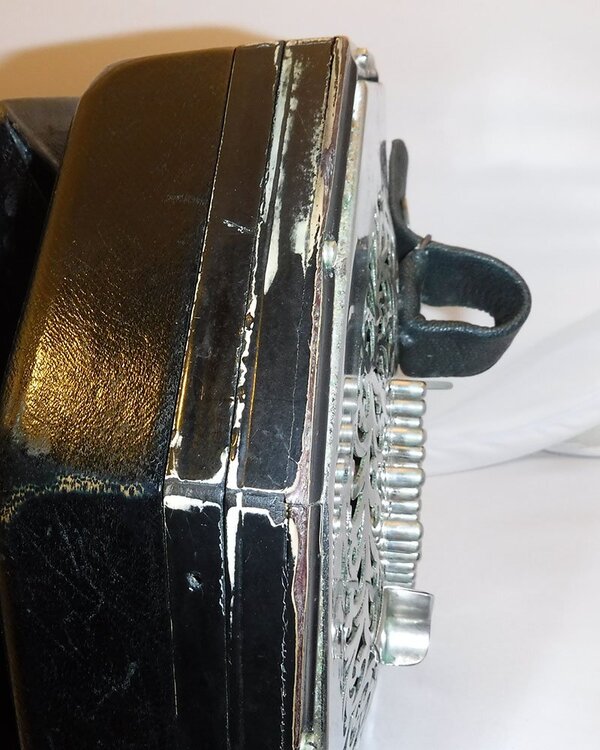

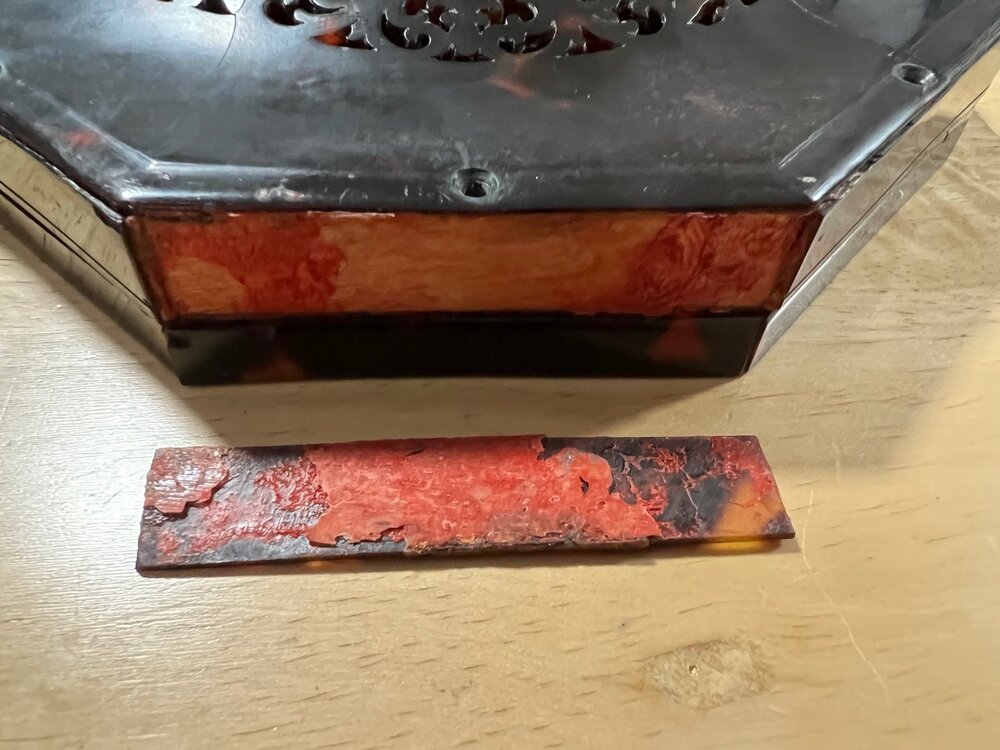

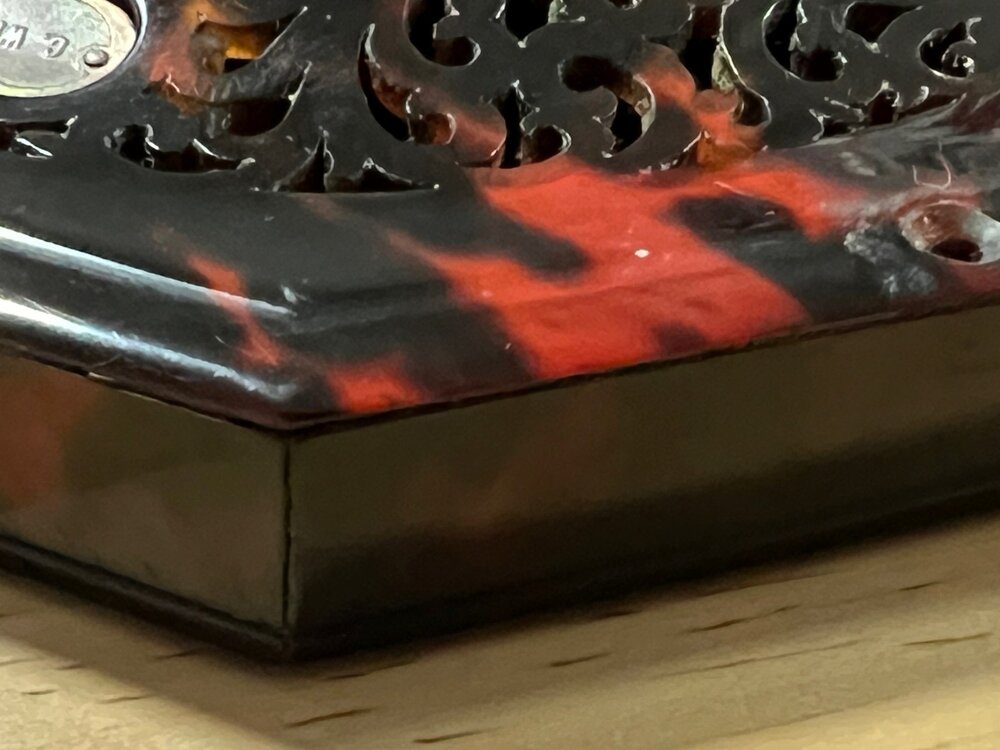
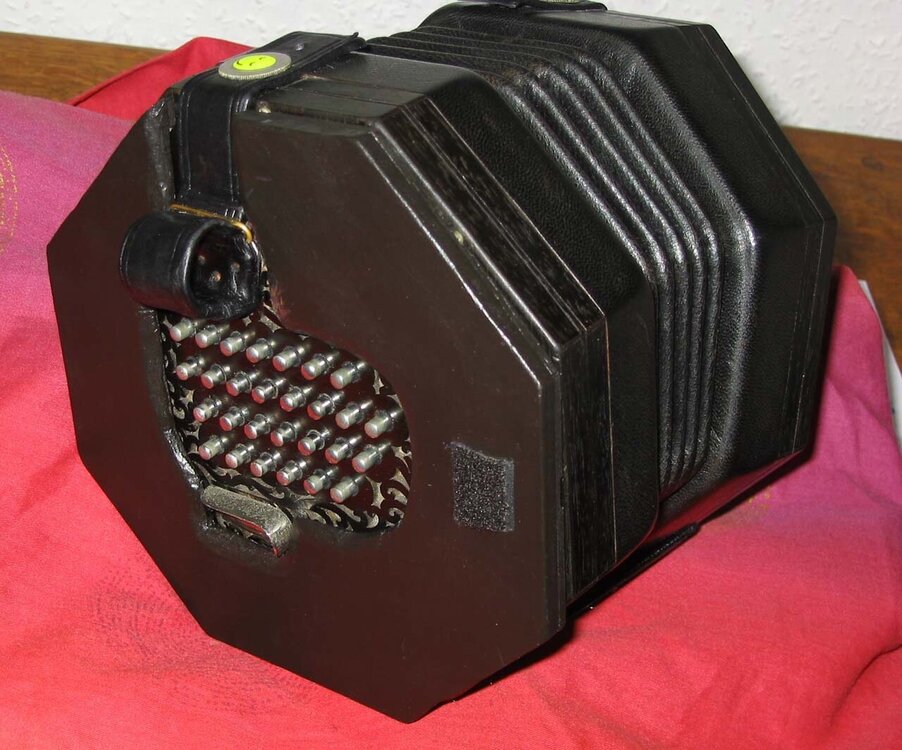
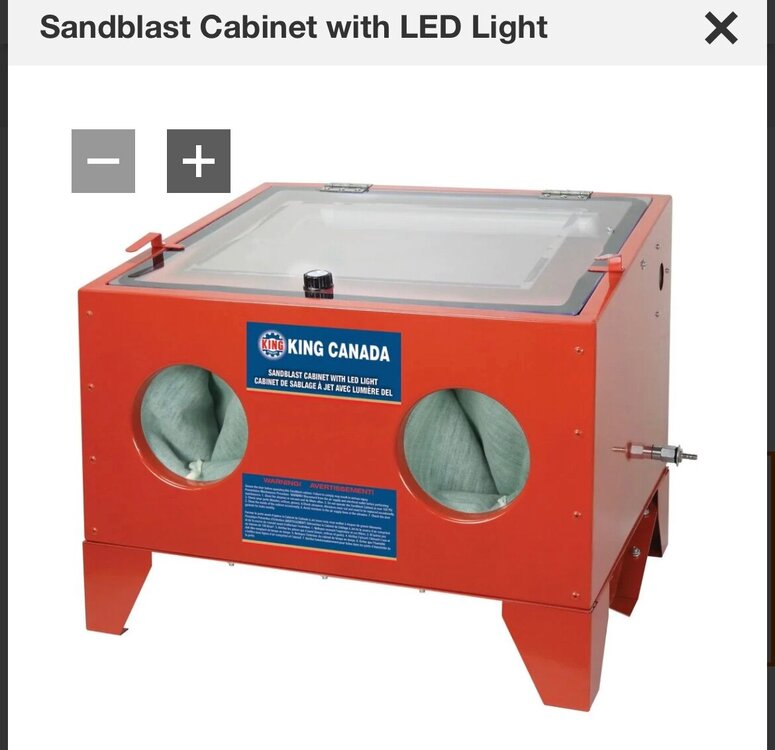

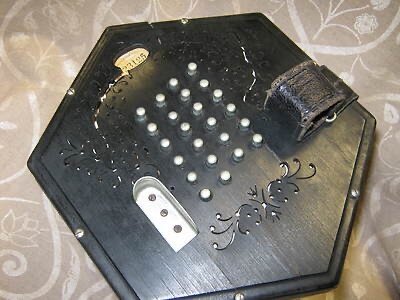
I'll Be Seeing You - 1938
in Concertina Videos & Music
Posted
Very nice! Thanks Michael.